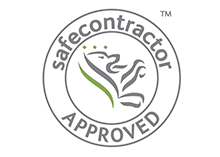 Are you tired of dealing with woodworm infestations in your home? Don’t worry, because our expert team is here to provide you with the best woodworm treatment advice to say goodbye to these pesky pests once and for all! With our step-by-step guidance, you’ll be able to identify the signs of woodworm infestation, understand the different types of woodworms, choose the right treatment, and prevent future infestations. Say goodbye to woodworms and hello to a woodworm-free environment with our expert advice!
Are you tired of dealing with woodworm infestations in your home? Don’t worry, because our expert team is here to provide you with the best woodworm treatment advice to say goodbye to these pesky pests once and for all! With our step-by-step guidance, you’ll be able to identify the signs of woodworm infestation, understand the different types of woodworms, choose the right treatment, and prevent future infestations. Say goodbye to woodworms and hello to a woodworm-free environment with our expert advice!
Understanding Woodworm Infestation
Woodworm infestation occurs when wood-boring beetles lay eggs in wood, resulting in the presence of woodworm larvae. These larvae can cause extensive damage to wooden structures over time. Woodworm infestation often goes unnoticed until the damage becomes visible. Common signs of woodworm infestation include the presence of small round exit holes in wooden surfaces and the crumbling or damage of wood. Wood dust may also be present near the infested area. There are different species of wood-boring beetles, each with its own behavior patterns and preferences for certain types of wood.
Woodworm larvae are responsible for the damage caused to wooden structures. These larvae burrow into the wood, feeding on the cellulose present. Over time, this can weaken the structure of the wood, leading to structural issues and potential safety hazards. Common species of woodworm beetles in the UK include the Common Furniture Beetle and the Deathwatch Beetle. Recognising the signs of woodworm infestation is crucial in order to take appropriate measures for treatment and prevention.
Recognising Types of Woodworms
In the UK, there are several common types of woodworms that can infest wooden structures. Among them are the Common Furniture Beetle and the Deathwatch Beetle. Each type of woodworm has distinct characteristics and behavior patterns.
The Common Furniture Beetle, also known as Anobium punctatum, is the most common wood-boring beetle found in the UK. It prefers softwood, such as pine and spruce, but can also infest hardwood. The larvae of the Common Furniture Beetle tunnel into the wood, leaving behind small exit holes. They can cause significant damage to wooden structures if left untreated.
The Deathwatch Beetle, also known as Xestobium rufovillosum, is less common but can cause more significant damage to wooden structures. It primarily targets hardwood, such as oak and chestnut. The larvae of the Deathwatch Beetle create extensive tunnels in the wood, resulting in weakened structures. This type of woodworm infestation is often associated with old and decaying timber.
Identifying Signs of Woodworm Infestation
Early detection of woodworm infestation is essential to prevent further damage to your wooden structures. There are several key signs to look out for that indicate the presence of woodworm.
The most obvious sign of woodworm infestation is the presence of small round exit holes in wooden surfaces. These holes are created when the adult beetles emerge from the wood after their larvae have completed their development. The size of the holes can vary depending on the species of wood-boring beetle.
Another sign of woodworm infestation is the condition of the wood itself. Infested wood may appear crumbly or damaged, particularly in areas where the larvae have been active. In some cases, you may also notice the presence of wood dust, known as frass, near the infested area. This is a result of the wood-boring beetles tunneling into the wood.
Preventing Future Woodworm Infestations
Preventing future woodworm infestations is essential for the longevity and integrity of your wooden structures. Regular inspection and treatment of wooden surfaces can help identify any signs of woodworm infestation early on and prevent further damage. Additionally, implementing preventive measures can discourage wood-boring beetles from infesting your wood.
One effective way to prevent woodworm infestations is to ensure proper ventilation and control of moisture levels. Woodworms are attracted to damp and moist wood, so keeping your wooden structures dry is key. Properly sealing cracks and gaps in wood can also help prevent woodworms from entering and infesting the wood.
By regularly inspecting and treating your wooden structures, ensuring proper ventilation and moisture control, and protecting different types of wood, you can create a woodworm-free environment and enjoy the longevity of your wooden structures.
Seeking Professional Help for Severe Infestations
In some cases, woodworm infestations can be severe and require professional intervention. If you have a severe infestation or if you are unsure of the extent of the problem, it is best to seek help from woodworm treatment specialists like ourselves.
Our team of experts is equipped to handle even the most severe woodworm cases. They have the knowledge, experience, and tools necessary to assess the extent of the infestation, determine the appropriate treatment method, and effectively eliminate the wood-boring beetles from your wooden structures.
If you are dealing with a severe woodworm infestation or if you have any questions or concerns about woodworm treatment, don’t hesitate to get in touch with our team. We are here to provide you with the guidance and assistance you need to address the problem and protect your wooden structures.
Protecting Different Types of Wood from Wood Boring Beetles
Different types of wood have varying levels of susceptibility to wood-boring beetles. Understanding how to protect specific types of wood can help prevent woodworm infestations and maintain the integrity of your wooden structures.
Hardwoods, such as oak and chestnut, are generally less susceptible to wood-boring beetles compared to softwoods, such as pine and spruce. However, no wood is completely immune to woodworm infestations. It is important to take preventive measures to protect all types of wood.
One effective way to protect wood from wood-boring beetles is by using appropriate wood finishes or treatments. These products act as a barrier, preventing the beetles from laying their eggs in the wood and protecting it from damage. Surface treatments and finishes can also enhance the appearance and durability of the wood.
Our experts can provide advice on protecting specific types of wood and recommend suitable woodworm treatment products. By taking proactive measures and protecting your wood from wood-boring beetles, you can ensure its longevity and maintain its beauty.
Expert Tips for Effective Woodworm Treatment
To effectively eliminate woodworm infestations, it is important to follow some expert tips for woodworm treatment. These tips will help ensure that the treatment is thorough and effective, providing long-lasting results.
Before applying any woodworm treatment solution, thoroughly clean and dry the affected wooden surfaces. Remove any dirt, debris, or old finish to ensure that the treatment penetrates the wood properly. This will maximize the effectiveness of the treatment and increase its longevity.
When applying the woodworm treatment, make sure to follow the instructions provided by the manufacturer. Apply the solution evenly to the affected areas, ensuring complete coverage. This will ensure that all larvae and beetles are targeted and eliminated.
Depending on the severity of the infestation, heat treatment might be necessary. Heat treatment involves exposing the wood to high temperatures to kill the wood-boring beetles and larvae. This method is particularly effective for severe infestations and can penetrate deep into the wood to reach hidden larvae.
By following these expert tips for woodworm treatment, you can effectively eliminate woodworm infestations and ensure the long-term protection of your wooden structures.
Maintaining Woodworm-Free Environment
Once you have treated your wooden structures for woodworm infestations, it is important to maintain a woodworm-free environment to prevent future infestations. Regular cleaning and inspection of wooden surfaces are crucial in identifying any signs of woodworm and taking immediate action.
Regularly clean your wooden structures with a soft cloth or brush to remove any dust or debris that could attract wood-boring beetles. Inspect the wood for any signs of woodworm, such as small round exit holes or crumbly wood. Taking prompt action at the first sign of infestation can prevent further damage and the need for more extensive treatment.
Implementing preventive measures can also help maintain a woodworm-free environment. Seal any cracks or gaps in the wood to prevent wood-boring beetles from entering. Ensure proper ventilation and control of moisture levels to discourage woodworms from infesting the wood.
By maintaining a woodworm-free environment, you can enjoy the beauty and longevity of your wooden structures without the worry of wood-boring beetles.
Conclusion
Remember to always be vigilant for signs of woodworm infestation and to act quickly to protect your wood from these damaging pests. Identify the signs of woodworm infestation, recognise the different types of woodworms, choose the right woodworm treatment, and implement preventive measures to create a woodworm-free environment.
Our experts are here to provide you with guidance and assistance in treating and preventing woodworm infestations. Don’t hesitate to get in touch with us if you have any questions or concerns.
Protecting your wooden structures from future woodworm infestations is crucial for their longevity. Regularly clean and inspect your wooden surfaces, implement preventive measures, and seek professional help for severe infestations.
By following our expert advice and taking proactive measures, you can say goodbye to woodworm infestations and enjoy the beauty and durability of your wooden structures for years to come.
Remember to always be vigilant, act promptly, and seek guidance when needed. Your wooden structures will thank you!
Frequently Asked Questions
How do you get rid of wood worms?
Woodworm infestations can be treated by using a variety of methods such as surface treatments, injection treatments, or fumigation. It is important to identify the extent of the infestation before choosing the appropriate treatment method. Our experts recommend a consultation to assess and identify the situation and determine the best course of action.
What is the best treatment for woodworm?
The best treatment for woodworm depends on the severity of the infestation. Surface treatments like woodworm killer sprays can be effective for minor cases, while larger infestations may require injection treatments or fumigation. It is crucial to follow the manufacturer’s instructions and safety precautions when using any treatment method to ensure effectiveness and safety.
Can woodworm go away on its own?
Woodworm infestations do not typically go away on their own. If left untreated, woodworm larvae can cause significant damage to wooden structures over time. It is important to address the issue promptly to prevent further damage and protect the integrity of your property. Seeking professional advice and treatment is recommended to effectively eliminate woodworm infestations.







